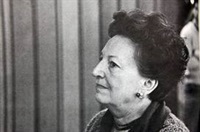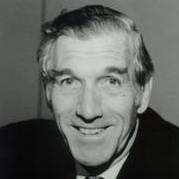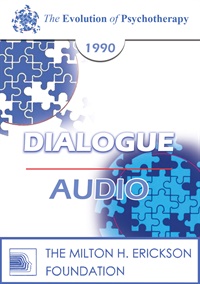EP90 Dialogue 03 - The Legacy of Gregory Bateson - Mara Selvini Palazzoli, MD; Paul Watzlawick, PhD
- Average Rating:
- Not yet rated
- Topic Areas:
- Dialogues | Psychotherapy | Systems Theory | Ethical Practice
- Categories:
- Evolution of Psychotherapy | Evolution of Psychotherapy 1990 | Pioneers in Couples and Family Therapy
- Faculty:
- Mara Selvini Palazzoli, MD | Paul Watzlawick, PhD
- Duration:
- 59 Minutes
- Format:
- Audio Only
- Original Program Date:
- Dec 12, 1990
- License:
- Never Expires.
Description
Description: This discussion explores Gregory Bateson's influence on psychotherapy, focusing on systemic thinking and the ethics of therapeutic influence. Speakers reflect on his contributions—like symmetry, complementarity, and learning patterns—and how these ideas inform practices such as positive connotation and family rituals. The conversation also touches on applying Bateson’s insights to contemporary work with schizophrenia and relational dynamics.
Moderated by Stephen Gilligan, PhD.
Educational Objectives:
- Given a topic, to become aware of the differing approaches to psychotherapy, and to identify the strengths and weaknesses in each approach
- To learn philosophies of various practitioners and theorists
*Sessions may be edited for content and to preserve confidentiality*
Credits
Handouts
| Timestamped Transcript (744.4 KB) | 16 Pages | Available after Purchase |
| Ericksonian Learning Snapshot (250.8 KB) | 2 Pages | Available after Purchase |
Faculty

Mara Selvini Palazzoli, MD Related Seminars and Products
Mara Selvini Palazzoli, MD, received her MD from the UNiversity of Milan in 1941. She was Director of the New Center for Family Therapy in Milan, and also served on a number of editorial boards. The recipient of the Distinguished Contribution to Research in Family Therapy award from the American Association for Marriage and Family Therapy, she was the author or coauthor of five books, primarily on her approach to understanding and treating families.

Paul Watzlawick, PhD Related Seminars and Products
Paul Watzlawick, received his Ph.D. from the University of Venice in 1949. He has an Analyst's Diploma from the C.G. Jung Institute for Analytic Psychology in Zurich. Watzlawick has practiced psychotherapy for more than 30 years. He was research associate and principal investigator at the Mental Research Institute. He was Clinical Professor at the Department of Psychiatry and Behavioral Sciences, Stanford University Medical Center. Watzlawick is a noted family therapist; he is recipient of the Distinguished Achievement Award from the American Family Therapy Association. Also, he is author, co-author or editor of eight books on the topics of interactional psychotherapy, human communication and constructivist philosophy.
He formulated five axioms. They are:
- It is not possible to not communicate. Every behavior is some kind of non-verbal communication.
- Every communication has a content. In addition, there is 'metainformation', which says how the communicator wants to be understood.
- All partners involved in a communication process also interpret their own behaviour during communication.
- Human communication involves both verbal and non-verbal communication. In addition to the spoken words, there are is also a non-spoken part (gestures, behavior, intonation..) which is part of the communication.
- Communication between humans is either symmetric or complementary. This is based on whether the relationship of those communicating is based on differences or parity.


